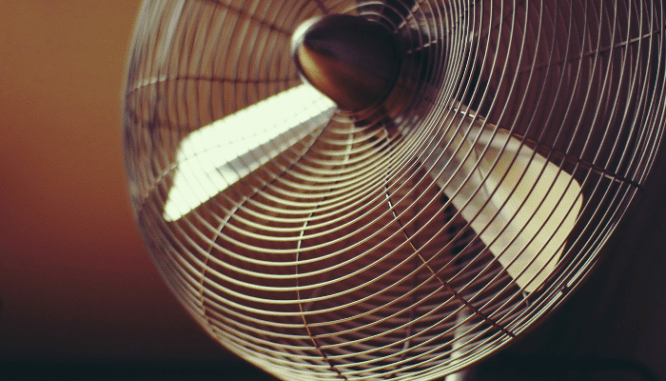4 House Ventilation Systems for Healthier Indoor Air Quality at Home
- Published on
- 5-6 min read
-
 Lori Lovely Contributing AuthorClose
Lori Lovely Contributing AuthorClose Lori Lovely Contributing Author
Lori Lovely Contributing AuthorLori Lovely edited the Real Estate Home section for the Indianapolis Star and covered the annual Dream Home construction and decor for Indianapolis Monthly magazine. She has written guides for selling houses and more.
You may have childhood memories of your parents telling you to close the door: “We’re not heating the outdoors!” Despite your annoyance at their pestering, they were right — keeping doors and windows closed lowers energy bills. However, if you only focus on keeping your house tightly sealed, your home is missing out on a crucial element: fresh air.
Ventilation — the exchange of indoor and outdoor air — is vital for a healthy home. According to the Scientific Committee on Health and Environmental Risks, indoor air contains as many as 900 chemicals and can have 70% more pollution than outdoor air. If your home isn’t properly ventilated, indoor air quality can be up to five times worse than outdoor air quality.
“It’s not all just about air exchange,” says Frank Ferrarelli, sales and marketing manager for The Geiler Company, a fourth-generation, Cincinnati-based HVAC company. Ventilation systems help treat the air in the house to reduce allergens, dust, pet dander, pollutants, and even viruses like COVID-19.
With insight from Ferrarelli, we’ll teach you the benefits of ventilating your house and walk you through the pros and cons of different house ventilation systems.

The benefits of ventilation
As mentioned above, ventilation is vital for maintaining healthy indoor air quality. Here are four ways ventilation systems can improve your home’s environment:
Reduce humidity and condensation
According to a survey from My Health My Home, 58% of homes have condensation, the most common form of dampness in a home. As the air cools, it releases water vapor, settling as droplets of water windows, metal door frames, and other surfaces.
If unaddressed, condensation can lead to mold, which may damage wood, upholstery, carpet, and other materials in your home. Mold may also cause health issues for those with allergies and other sensitivities.
Adequate ventilation reduces humidity levels in your home by removing moist air from the building. The less moisture in the air, the less condensation will occur.
Alleviate health issues, such as asthma and hay fever
Damp, moldy conditions trigger asthma attacks. Humid environments are also breeding grounds for dust mites, which can cause allergic reactions in some people, with symptoms including asthma attacks, runny nose, sneezing, eczema, itching, and watery eyes.
Ventilation systems improve airflow out of the house, preventing dust allergens from accumulating in the air. Additionally, some ventilation systems filter large particles, such as pollen, out of the air, thereby lessening hay fever symptoms and pollen or grass allergies.
Reduce the effects of radon gas
Radon is a colorless, odorless, radioactive gas that occurs naturally in soil. When the radioactive element known as Radon’s Daughters attaches to dust particles, it travels in the air. If inhaled, it clings to the airways of the lung. According to the World Health Organization, Radon causes between 3% to 14% of all lung cancers.
Ventilation plays a key role in keeping radon gas out of your living space. Ferrarelli explains that radon mitigation involves an underground exhaust system that creates pressure underneath your home’s foundation to ventilate this harmful gas.
Decrease the impact of VOCs
Invisible gases known as Volatile Organic Compounds (VOCs) come from numerous sources such as cleaning products, paint, perfume, and hairspray. Following certain activities such as cleaning and stripping paint, VOC levels could be as much as 1,000 times higher indoors than typical outdoor levels. If your home is not properly ventilated, VOCs become trapped indoors, polluting your indoor air quality, which can cause health problems for your household.
Improve your home’s energy efficiency
Ventilation not only provides a healthy indoor environment but also improves energy efficiency. High humidity levels put a strain on your air conditions, leading to higher energy bills. Ventilation is also the least expensive and most energy-efficient way to cool a home. For hot days, you’ll, of course, need to combine other methods to keep your home at a comfortable temperature.

Types of ventilation systems
There are several types of ventilation systems on the market. Each comes with unique pros and cons, as we’ll explore below.
Exhaust-only ventilation
Exhaust ventilation systems depressurize a house to force indoor air out. By reducing indoor air pressure to a level lower than outdoor air pressure, the system pushes the inside air out.
Typically, exhaust-only ventilation systems incorporate a centralized exhaust fan in the attic that pulls air from inside the home and moves it through a vent stack on the roof.
Price range:
The national average cost is $580 to $1,270 for a 24-inch whole-house fan with two speeds and an average noise rating. The house size and the number of vents required impacts the cost.
Pros:
- Work well in dry, desert climates
- Work well in cold climates
- Simple to install
- Inexpensive
Cons:
- Can increase energy costs
- Not suitable for hot, humid climates
- Can pull in pollutants like dust, fumes, and radon
Supply-only ventilation
Supply ventilation systems (also called central-fan-integrated supply ventilation systems) are the opposite of exhaust systems. This type of system pressurizes a house using a fan to force outside air through the home’s existing forced-air ductwork to distribute fresh air.
Price range:
The national average to install ventilation ranges from $600 to $1,080. The cost for additional passive ductwork runs an average of $15 to $40 per foot.
Pros:
- Simple to install
- Prevents backdraft from fireplace and appliances
- Provides better control than exhaust systems
- Filters air to remove pollen, dust, and other pollutants
- Works well in hot and mixed temperature climates
Cons:
- Only provides ventilation when the HVAC system is running
- May create moisture problems in cold climates
- Increases energy costs
- May leave your home feeling drafty
Balanced ventilation
A balanced ventilation system incorporates two fans and two duct systems to pull in and exhaust equal amounts of air.
Price range: Cost varies, depending on the size of the home, but in general, prices run from $2,000 to $4,000.
Pros:
- Suitable for all climates
- Balances bringing fresh air in and pushing indoor air out
Cons:
- Increases energy costs
- Does not remove moisture from incoming air
- More expensive to install and run than exhaust or supply systems
Energy-recovery ventilation
The two types of energy-recovery systems are heat-recovery ventilators, which transfer heat, and energy-recovery ventilators, which transfer heat and a minimal amount of water vapor. Both types of energy-recovery systems include a heat exchanger and one or more fans to push air through the machine. Whole-house systems share ductwork with the HVAC system.
Ferrarelli elaborates: “Recovery-style units pipe into the HVAC system, so the air goes through filtration.” This process refreshes the air in your home without losing the heat or cold produced by your HVAC.
Price range: National average cost is $2,000. An ERV costs about $150 to $200 more than an HRV.
Pros:
- Reduces drafts
- Reduces energy costs by coordinating with your HVAC system
- Can recover 70% to 80% of the energy in exiting air and transfer it to incoming air
- ERV systems maintain humidity levels in the house
Cons:
- More expensive to install
- Not as cost-effective in milder climates
- Requires freeze and frost protection in colder climates
- Requires more maintenance than other systems

Don’t forget manual ventilation strategies
Regardless of what type of ventilation system you have, you can bring fresh air into your home by periodically opening windows and doors. Experts advise airing out your home 15 to 30 minutes every day (even in extreme climates) to release indoor air pollutants.
In addition to opening as many doors and windows as it’s safe to do, the Centers for Disease Control advises placing fans close to open windows and doors to blow stale air out.
Between airing your house out with windows and a built-in ventilation system, you can maintain healthy indoor air quality at home.
Header Image Source: (Helen Shi / Unsplash)
